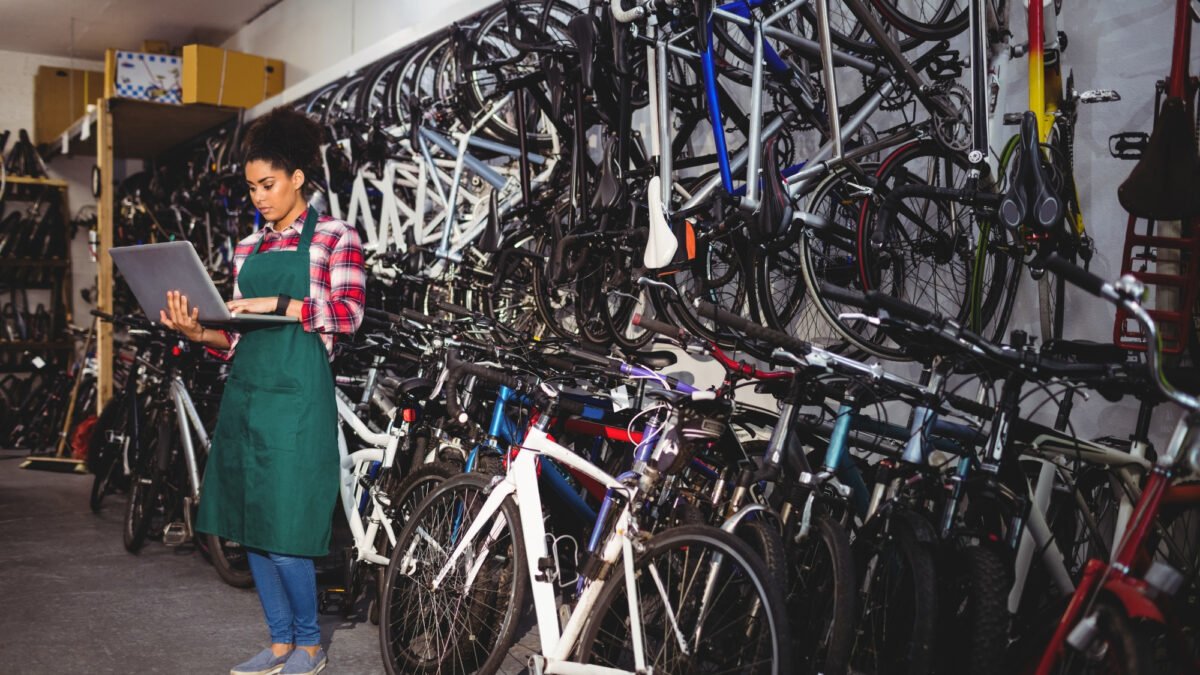Disclosure: Small Business Philippines strives to provide relevant and accurate information in all its articles. However, some information in our articles may differ or might be outdated from what you can see or read directly from the establishments’ or businesses’ websites. Please get in touch with us directly for any discrepancies.
Starting a bicycle shop involves establishing and operating a retail business that specializes in selling bicycles, accessories, and related products.
This comprehensive guide will walk you through the step-by-step process of setting up a successful bicycle shop in the Philippines.
Why Start a Bicycle Shop?
Starting a bicycle shop can be an exciting and rewarding venture for passionate entrepreneurs. The rising popularity of cycling as a recreational activity, an eco-friendly transportation option, and a means of improving fitness presents a lucrative opportunity. By catering to the growing demand for bicycles and cycling accessories, you can tap into a thriving market and create a business that aligns with your passion.
When and Where to Start a Bicycle Shop
Timing and location play crucial roles in the success of your bicycle shop. Analyze market trends, conduct thorough research, and choose the right time to enter the market. Additionally, selecting a strategic location that offers high foot traffic, accessibility, and proximity to cycling communities will increase your chances of attracting customers.
How to Start a Bicycle Shop – Step-by-Step Guide
1. Develop a Business Plan
Outline your vision, mission, target market, competition analysis, and financial projections. A well-crafted business plan serves as your roadmap to success.
2. Secure Funding
Determine the startup costs, including inventory, store setup, permits, and marketing expenses. Explore funding options such as personal savings, loans, or partnerships.
3. Choose a Legal Structure
Decide whether to register your business as a sole proprietorship, partnership, or corporation. Consult with a legal professional to ensure compliance with local regulations.
4. Find Suppliers and Inventory
Establish relationships with reliable bicycle and accessory suppliers. Consider factors such as quality, variety, pricing, and delivery options when selecting your inventory.
5. Set Up Your Store
Design an attractive and functional retail space that showcases your products. Invest in eye-catching displays, comfortable seating areas, and well-organized shelves to enhance the customer experience.
6. Obtain Necessary Permits and Licenses
Comply with legal requirements by obtaining business permits, tax registrations, and any specific licenses related to operating a bicycle shop.
7. Develop a Marketing Strategy
Utilize various marketing channels to create awareness and attract customers. Leverage online platforms, social media, community partnerships, and local events to reach your target audience effectively.
8. Provide Exceptional Customer Service
Train your staff to offer expert advice, guidance, and exceptional customer service. Establish a reputation for reliability, knowledge, and a friendly shopping environment.
Examples and Tips for Success
Specialize in a Niche
Consider focusing on a specific segment of the cycling market, such as mountain bikes, road bikes, or vintage bicycles. This specialization can attract passionate customers and differentiate your shop from competitors.
Offer Repair and Maintenance Services
Provide in-house bicycle repair and maintenance services to cater to the needs of your customers. This additional service can generate recurring revenue and foster customer loyalty.
Build Relationships with Local Cycling Communities
Collaborate with cycling clubs, organizations, and enthusiasts to build a supportive network. Sponsor local events, organize group rides, and create partnerships to establish your shop as a hub for the cycling community.
Embrace Online Sales
Expand your reach by creating an e-commerce website or partnering with existing online platforms. Provide customers with the option to browse and purchase your products conveniently.
Key Takeaways
Starting a bicycle shop in the Philippines in 2023 requires careful planning, market analysis, and strategic execution. By following this comprehensive guide, you can establish a thriving business that caters to the growing demand for bicycles and accessories. Remember to focus on exceptional customer service, build relationships within the cycling community, and adapt to the changing landscape of online sales. Start your entrepreneurial journey today and join the vibrant world of bicycle retail.



